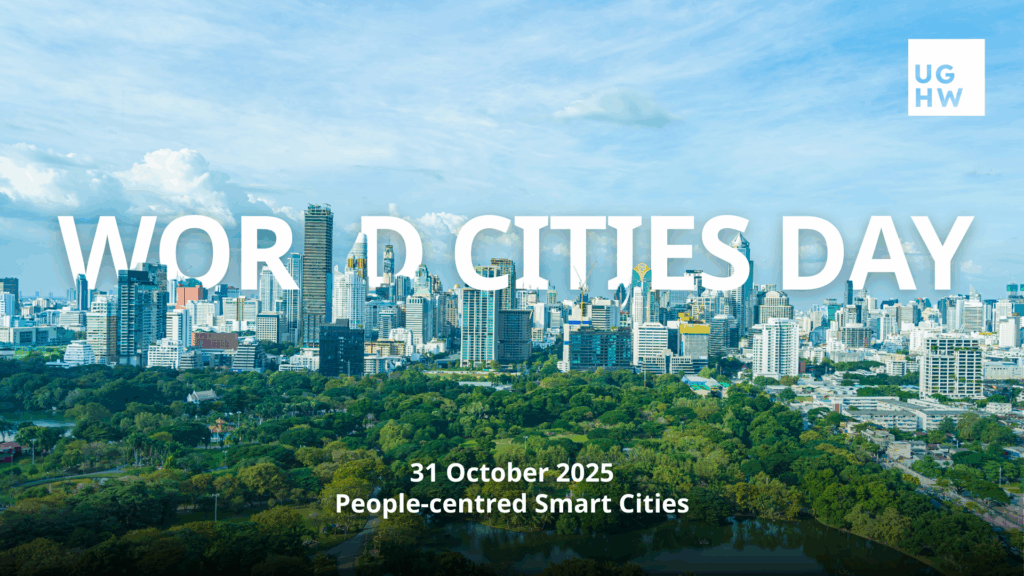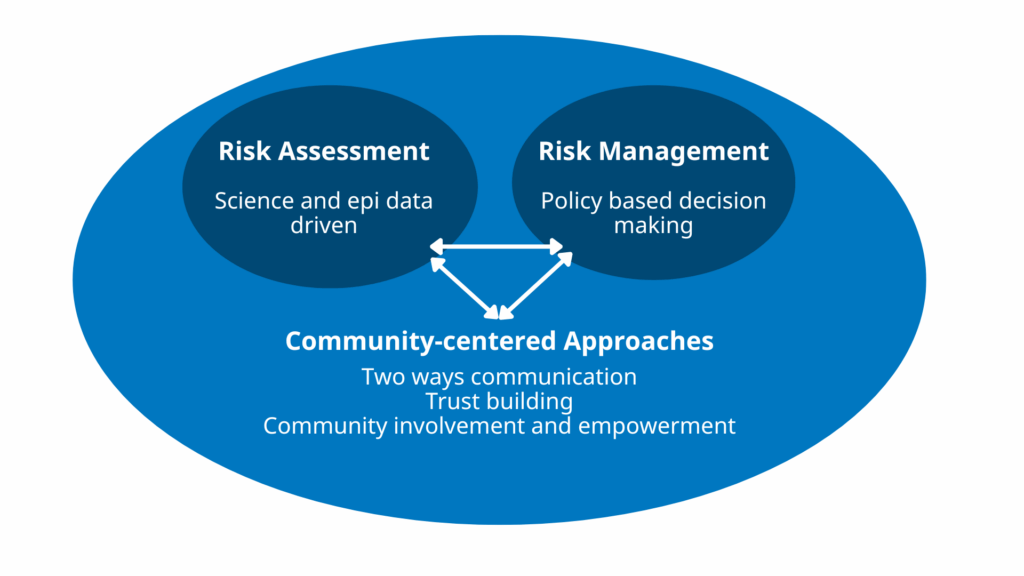Rapid digitalization in the world has propelled national and subnational authorities to accelerate the use of digital technologies to enhance service provision, people participation, and monitoring performances/feedback. Local urban governments are on the forefront to respond to the needs of the people living in cities. However, success in responding to climate changes and other challenges requires not only leadership from the local governments, but also multisectoral collaboration across sectors.
Member cities of the WHO SEARO healthy cities network have thus engaged in a series of capacity building initiatives to strengthen their governance and local actions for health and wellbeing, with people at the center of the decision making and action plans.

Leading up to the World Cities Day 2025, WHO South-East Asia region and the Regional Laboratory for Urban Governance for Health and Wellbeing (RL-UGHW) co-organized two events over the course of September – October 2025 with a focus on having people-centered city actions toward building resilience and smart response to climate changes – a webinar focusing on resilience and preparedness for emergencies in response to climate change, followed by a workshop to build capacities on urban preparedness for health emergencies.
Capacity building efforts highlighted the importance of adopting a people-centered approach to identifying, understanding, and empowering the most vulnerable populations. WHO’s Risk Communication and Community Engagement (RCCE) strategy was introduced to local governments, looking at empowering communities before, during and after emergencies. Community-centred health emergency management engages the people who are at risk in decisions that are taken to protect their health and wellbeing. In turn, solutions developed are tailored to diverse needs and contexts, ensuring their sustainability.
The importance of an integrated strategy cutting across biological, environmental, and social dimensions was highlighted, in order to protect vulnerable urban areas in response to unpredictable and transboundary threats. This is underpinned by the WHO Preparedness and Resilience for Emerging Threats (PRET) framework which focuses on five interconnected subsystems: Collaborative surveillance, Community protection, Access to countermeasures, Scalable clinical care, and Emergency coordination; urging cities to “think the unthinkable” and translate foresight into action.

Infodemics add a new layer of complexity to emergency response and disaster management; in times of disaster, response is often impeded due to too much information as well as the spread of misinformation. Thus, it is crucial for the relevant stakeholders to strategically integrate early warning systems in multiple channels. Technology provides opportunities for cities to explore innovative means to best prepare and respond to disasters.
The emphasis on the critical role of multi-hazard early warning systems was reiterated by our UN partners, UNDRR, sharing the UNDRR Making Cities Resilient (MCR) 2030 initiative. Key pillars of MCR20230 include: promoting local ownership through community-based disaster risk management approaches, and the strengthening of the role of local government authorities for disaster. Early warning systems and responses can be monitored through smart city digital dashboards, as implemented by some healthy cities members.
From a climate change perspective, the need to “future-proof” urban hospitals and clinics against climate risks, ensuring resilient water and sanitation systems sufficient for the population are critical infrastructure for any smart, sustainable city. WHO’s Operational framework for building climate resilient and low carbon health systems provides guidance on the protection of the health of communities in an unstable and changing climate. The case studies explored further reflect the importance of local engagement and adaptation as well as the use of technologies and products to provide safe and quality care in the context of climate change. Timely monitoring and response to vulnerable locality would make the cities smartly utilize specific resources.
Beyond health infrastructure, preparedness for climate change, and response to public health emergencies, members of the healthy city network had an opportunity to join another workshop where participants were urged to rethink urban plans and explore alternative infrastructure for urban spaces that are responsive to the people’s needs. The recovery phase of public health response is often neglected despite it being a great opportunity to rebuild better and more resilient cities for everybody.
WHO SEARO and the RL-UGHW joined hands to stimulate members of the healthy cities network to have a long term strategy for innovative urban planning that promotes health and wellbeing. It is important that future thinking for urban development is not limited to advancement in technology but also advancing inclusive urban infrastructure that strengthen community engagement and highly value humanity, peace and prospect. We are moving forward to make our cities smarter and truly people-centered cities.
Note: Presentation slides from past events can be found on UGHW’s website here.



